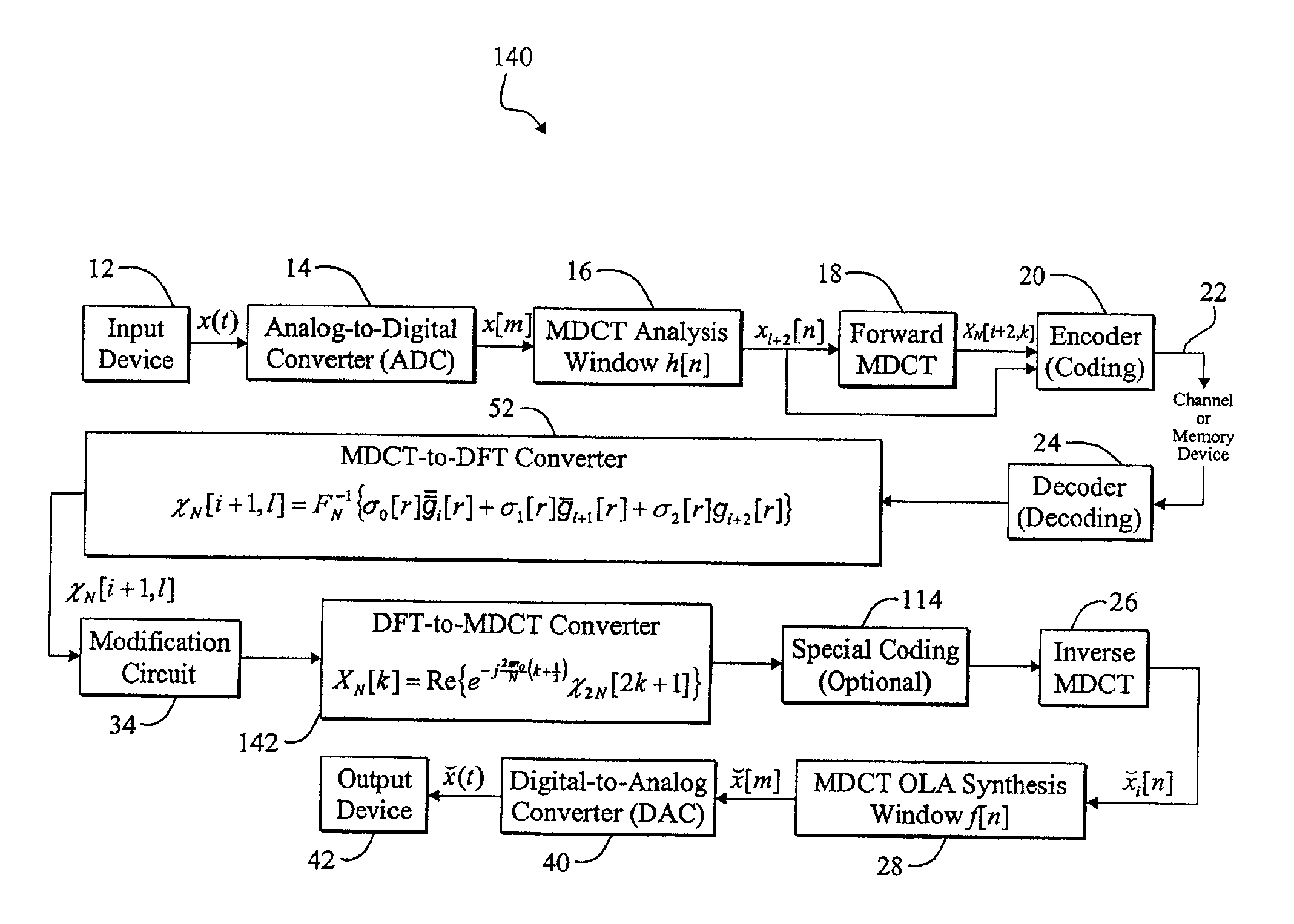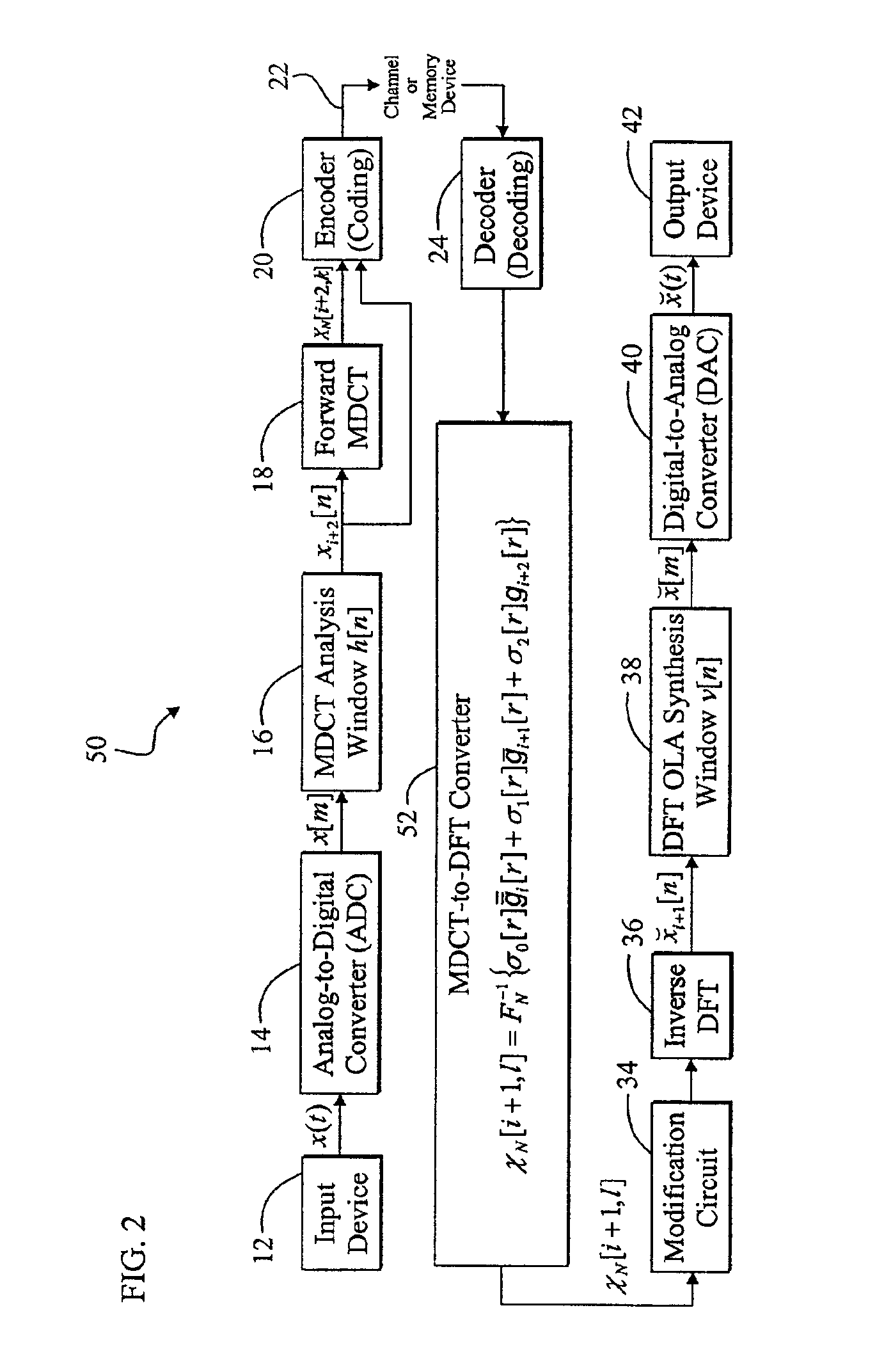Efficient system and method for converting between different transform-domain signal representations
a transform-domain and signal technology, applied in the field of digital signal processing, can solve problems such as problems such as the inability to facilitate signal modification and/or extraction of signal magnitude and/or phase information, the inability to use the dft domain for coding, and the interference of mdct signal modification with aliasing cancellation, etc., to achieve the elimination of intermediate time-domain processing, the effect of reducing undesirable artifacts in the reconstructed signal
- Summary
- Abstract
- Description
- Claims
- Application Information
AI Technical Summary
Benefits of technology
Problems solved by technology
Method used
Image
Examples
Embodiment Construction
[0034]While the present invention is described herein with reference to illustrative embodiments for particular applications, it should be understood that the invention is not limited thereto. Those having ordinary skill in the art and access to the teachings provided herein will recognize additional modifications, applications, and embodiments within the scope thereof and additional fields in which the present invention would be of significant utility.
[0035]FIG. 1 is a diagram of a digital audio system 10 of the present invention that converts from the Modified Discrete Cosine Transform (MDCT) domain to the Discrete Fourier Transform (DFT) domain via intermediate time-domain conversion. For clarity, various components, such as window switching circuitry, psychoacoustic information extraction circuitry, power supplies, clocks, and amplifiers, are omitted from FIG. 1, however one skilled in the art with access to the present teachings will know how to implement the additional compone...
PUM
 Login to View More
Login to View More Abstract
Description
Claims
Application Information
 Login to View More
Login to View More - R&D
- Intellectual Property
- Life Sciences
- Materials
- Tech Scout
- Unparalleled Data Quality
- Higher Quality Content
- 60% Fewer Hallucinations
Browse by: Latest US Patents, China's latest patents, Technical Efficacy Thesaurus, Application Domain, Technology Topic, Popular Technical Reports.
© 2025 PatSnap. All rights reserved.Legal|Privacy policy|Modern Slavery Act Transparency Statement|Sitemap|About US| Contact US: help@patsnap.com



